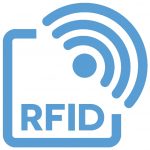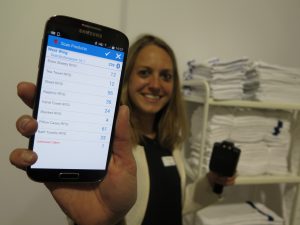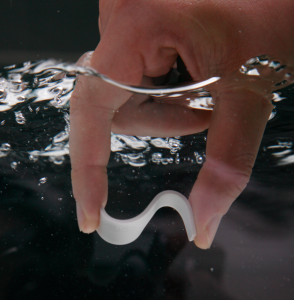Где бы вы ни находились, все уже слышали о UHF RFID технологии. Мы рады сообщить вам более подробно об этой технологии и огромные преимущества, которые он приносит в нашей отрасли.
Различия между LF, HF and UHF RFID
The main differences between Low Frequency (LF), высокая частота (ВЧ) и сверхвысокой частоты (UHF) tags are the speed in which the tags can be read/registered and the reading distance. LF and HF tags have a reading range of approximately 30-40 см, while the reading range of the latest generation UHF tags may extend up to 9 метров. This provides you the huge advantage of reading thousands of tags in just a few seconds, thus saving labour and costs.
Costs versus benefits
The aim of UHF technology is to save time and costs on (manual) обработка. Imagine you have to count all products because the contracted price is invoiced based on soil-clean return. Sometimes the difference with a table runner and a napkin is small which can cause mistakes in the counting. Кроме того, you need to sort out the soil first, followed by the counting. All handled manually. Using UHF RFID tags, we can leave this intensive labour behind us and move forward to the future. Now you can read the entire laundry bag and contents in just one movement!
This technology also provides you accurate information regarding the circulation speed of each product. Often companies are shocked to learn how slow the circulation speed of an article is. В качестве альтернативы, even worse… How many linen items never return… Very often these are new items!
More and more we learn that the customer wants to understand the laundry logistics in better detail. Eventually good management will reduce the costs for both laundry and customer. We are increasingly being requested by clients to, whether or not incidentally, install soil and return registration on site. Together with the client, we determine the best solution; install various sizes of fixed UHF Readers or scanning Portals or our very manageable smartphone solution. Both options give the benefit to follow the internal movements of the linen items.
Various reading points
 Because you need to know as quickly as possible which items have returned from the customer, we start at the soil department. The complete in-registration can be completed with very flexible hardware installations. In the typical pool article laundries it is mostly sufficient to mount antennas above the conveyor belts. This way both the in-registration and return counting are fully automated.
Because you need to know as quickly as possible which items have returned from the customer, we start at the soil department. The complete in-registration can be completed with very flexible hardware installations. In the typical pool article laundries it is mostly sufficient to mount antennas above the conveyor belts. This way both the in-registration and return counting are fully automated.
Based on the automatic in-registration, the order for the next delivery is created immediately in the laundry information system.
The next UHF reading points for garment products are often at the hanging station at the tunnel finisher, the sorting sys
tem and the folding machine after the stacker. Here we can also intercept any articles that have not been tagged yet. Our goal is to always completely integrate the UHF reading in the regular production handling at each workstation. Снова, to avoid costs. Relating to further UHF scanning capture points for linen items is the bundling machine for towels/sheets as a good example.
Using the UHF technology all products in a bundle will be registered and unique bundles can be created. At the packing department, we can process the out-scanning based on the orders/packing advices. В (pool) articles in the container will then be linked automatically to the appropriate customer. Now we not only know how many items have been sent to the customer but also which actual individual items and their history.
What is the best way to apply UHF RFID tags?
The easiest way is to have the tags installed by your textile supplier during manufacturing. Often the tags can be inserted in the hem or band of an article. For existing linen, the tags can be applied by using a pouch or heat seal label. On request the pouch can be supplied with your company logo. It is also possible to open the hem of the article, install the tag and close the hem again. It is important to correctly follow the application instructions, which we are happy to supply to you.
Sectors
UHF RFID tags have been implemented in all product lines of our industry, from flat linen and garments to or items. Looking at the market segments, we currently see projects being started, mostly in the healthcare and the hotel/restaurant sector. Currently some companies have even started with the application of UHF RFID tags in personal garments, for example in nursing homes.
Для получения дополнительных сведений о RFID Прачечная Тег, ПожалуйÑта, поÑетите:
http://www.rfidhy.com/rfid-product/industry-logistics/rfid-laundry-tag/






